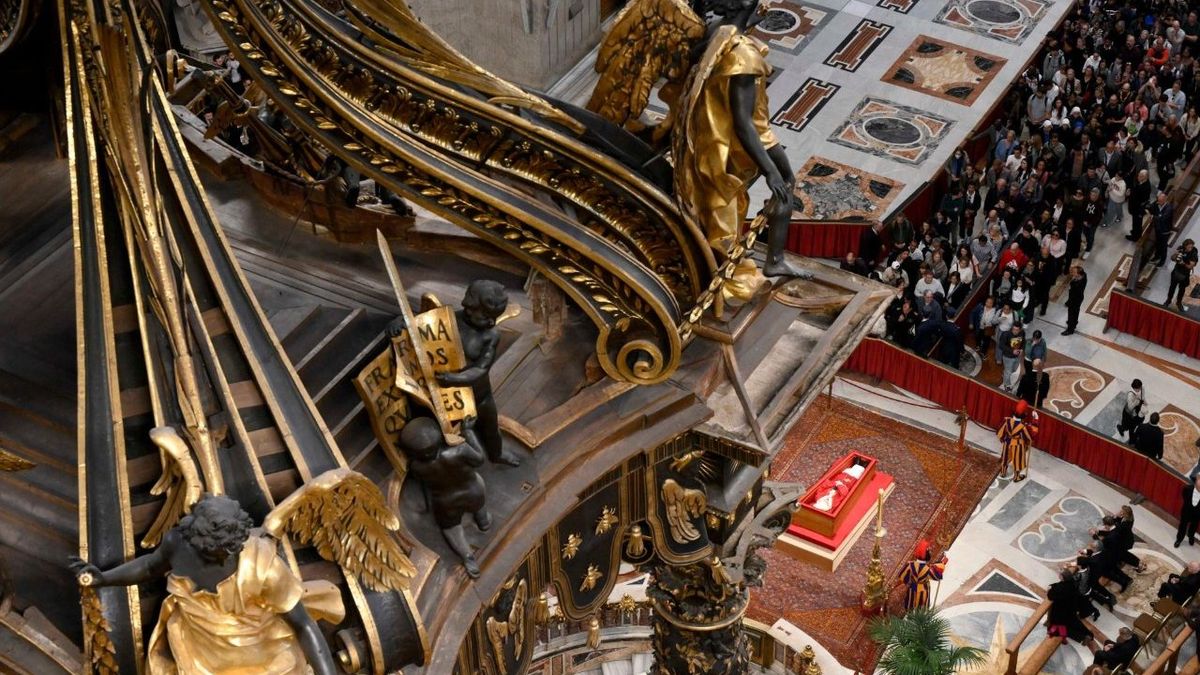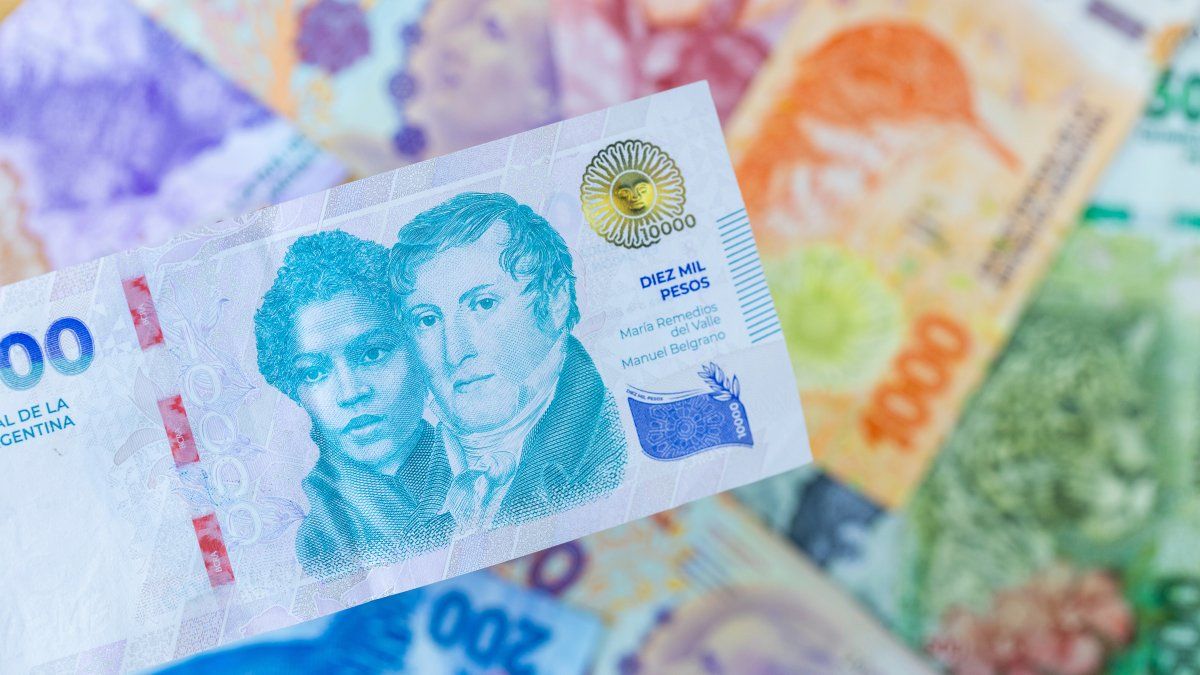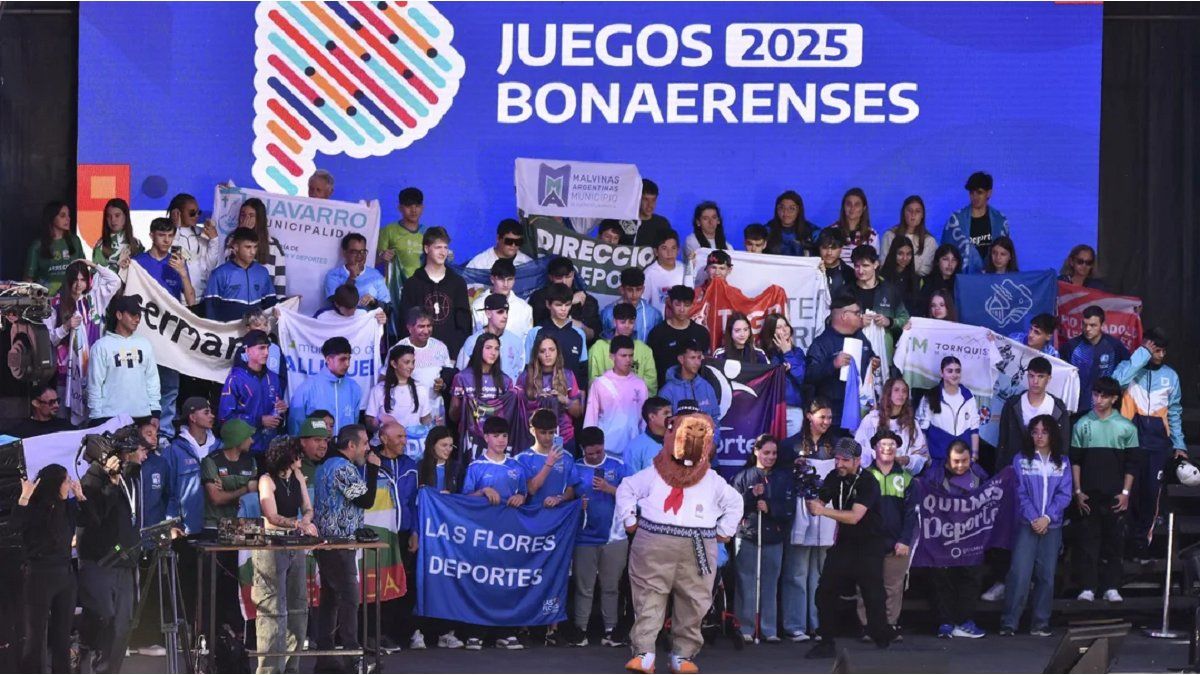Francisco was the 266th Pope. His memory remains in the heart of the Church and all humanity.
Jorge Mario Bergoglio, elected Pope on March 13, 2013, was born in Buenos Aires on December 17, 1936, son of Piedmontic emigrants: his father Mario was an accounting, used in the railroads, while his mother, Regina Sivori, took care of the home and education of her five children. After graduating as a chemical technician, he chose the path of the priesthood, initially entering the Diocesan Seminary and, on March 11, 1958, in the novitiate of the Society of Jesus.
He conducted his humanistic studies in Chile and returned to Argentina in 1963, where he graduated in Philosophy at the San José de San Miguel school. He was a professor of literature and psychology in the schools of the Immaculate of Santa Fe and the Savior of Buenos Aires. He was ordained a priest on December 13, 1969 by Archbishop Ramón José Castellano, and made his perpetual profession in the Jesuits on April 22, 1973.
After exercising as a novices teacher at Villa Barilari de San Miguel, professor at the Faculty of Theology, consultant of the province of the Society of Jesus and Rector of the College, he was appointed provincial Jesuit of Argentina on July 31, 1973.
After 1986, he spent a few years in Germany to complete his doctoral thesis and, once back in Argentina, Cardinal Antonio Quarracino wanted him as his narrow collaborator.
On May 20, 1992, Juan Pablo II appointed him holder of Auca and auxiliary of Buenos Aires. He chose as an episcopal motto “Miserando Atque choosing” and in his coat of arms the Christ Christogram, symbol of the Society of Jesus. On June 3, 1997, he was promoted to Archbishop Coadjutor of Buenos Aires and, at the death of Cardinal Quarracino, it happened on February 28, 1998 as Archbishop, primacy of Argentina, ordinary for the faithful of Eastern Rite residents in the country and great chancellor of the Catholic University.
John Paul II created Cardinal in the Consistory of February 21, 2001, with the title of San Roberto Belarmino. In October, he was attached general rapporteur at the X Ordinary General Assembly of the Synod of the Bishops.
He was a simple and very dear shepherd in his archdiocese, who was traveling everywhere, even on the subway and bus. He lived in an apartment and was preparing dinner, because one felt one of the town.
He was chosen Pope by the cardinals gathered in conclave after the resignation of Benedict XVI on March 13, 2013 and took the name of Francisco, because following the example of the Holy of Assisi he wanted to deal first of all of the poorest in the world. From the lodge of blessings he presented himself with these words: “Brothers and sisters, good afternoon! And now, let’s start this path: Bishop and people. This path of the Church of Rome, which is the one that presides in charity to all churches. A path of fraternity, love, of trust among us.” And, after bowing their heads, he said: “I ask you to pray to the Lord to bless me: the prayer of the people, who asks for the blessing for his bishop.” On March 19, Solemnity of San José, officially began its Petrino Ministry.
Always attentive to the poorest already discarded by society, Francisco chose to live in the Domus Sanctae Marthae as soon as he was chosen, because he could not do without contact with people, and since the first Holy Thursday he wanted to celebrate the Mass in Domini dinner outside the Vatican, going to prisons, to the centers for disabled or drug addicts. He urges priests who were always willing to administer the sacrament of mercy, who had the value of leaving the sacristies to go in search of the lost sheep, and that they kept open the doors of the Church to welcome all those desires of an encounter with the face of God the Father.
He exercised his petrino ministry with tireless dedication to dialogue with Muslims and with representatives of other religions, sometimes calling for prayer meetings and signing joint statements in favor of the concord between members of different confessions, such as the document on the human fraternity signed on February 4, 2019 in Abu Dhabi with the Sunni leader Al-Tayyeb. His love for the last, the elderly and the little ones led him to launch the world days of the poor, grandparents and children. He also instituted the Sunday of the Word of God.
More than any of its predecessors, the Cardinal College expanded, calling ten consistories in which he created 163 Cardinals, including 133 voters and 30 non -voters, from 73 nations, 23 of which had never had a cardinal. He summoned five assemblies of the Synod of the Bishops, three ordinary general assemblies, dedicated to the family, the young and the synodality, an extraordinary one again on the family, and a special for the Panamazon region.
Again and again, his voice rose in defense of the innocents. Given the propagation of the Covid-19 pandemic, on the afternoon of March 27, 2020, he wanted to pray alone in the Plaza de San Pedro, whose colonnade symbolically hugged Rome and the world, by the scared humanity and wounded by the unknown disease. The last years of their pontificate have been marked by numerous calls in favor of peace, against the third World War in pieces in various countries, especially in Ukraine, as well as in Palestine, Israel, Lebanon and Myanmar.
After a hospital admission on July 4, 2021, which lasted ten days, for surgical intervention in the Agostino Gemelli polyclinic, Francisco returned to the same hospital on February 14, 2025 for a 38 -day stay, due to bilateral pneumonia. He returned to the Vatican and spent the last weeks of his life in the Santa Marta house, dedicating himself to the end and with the same passion to his Petrino ministry, although not yet fully recovered. On Easter Sunday, April 20, 2025, the Lodge of the Basilica of San Pedro looked out to teach the solemn Urbi et Orbi blessing.
Pope Francis’s doctrinal teaching has been very rich. Witness of a sober and humble style, founded on the opening to the missionary work, the apostolic courage and mercy, attentive to avoid the danger of self -referentiality and spiritual worldness in the Church, the Pontiff proposed his apostolic program in the exhortation Evangelii Gaudium (November 24, 2013). The main documents include four encyclicals: Lumen Fidei (June 29, 2013) that addresses the issue of faith in God, Laudato Si ‘(May 24, 2015) that plays the problem of ecology and the responsibility of humanity in the climate crisis, Fratelli Tutti (October 3, 2020) on human fraternity and social friendship, Dilexit Nos (October 24, 2024) Most Sacred Heart of Jesus.
He promulgated 7 apostolic exhortations, 39 apostolic constitutions, numerous apostolic letters, most of them in the form of Motu Proprio, 2 bulls for the indication of holy years, in addition to the catechesis proposed in the general audiences and the address pronounced in various parts of the world. After instituting the secretaries for communication and for the economy, and the dicasteries for laity, family and life and for the service of integral human development, the Roman curia reformed with the Apostolic Constitution Praedicate Evangelium (March 19, 2022). He modified the canonical process for the causes of declaration of matrimonial nullity in the CCEO and the CIC (MP Mitis et mercy iesus and mitis iudex dominus iesus) and tightened the legislation on crimes committed by representatives of the clergy against minors or vulnerable persons (Mp vos Estis Lux Mundi).
Francisco has left everyone an admirable testimony of humanity, holy life and universal paternity.
Corpus Francisci PM
Vixit Annos LXXXVIII, MESSES IV DIES IV.
Ecclesiae Universae Praefuit
Annos XII Menses I Dies VIII
Semper in Christo Vivas, Pater Sancte!
Source: Ambito




